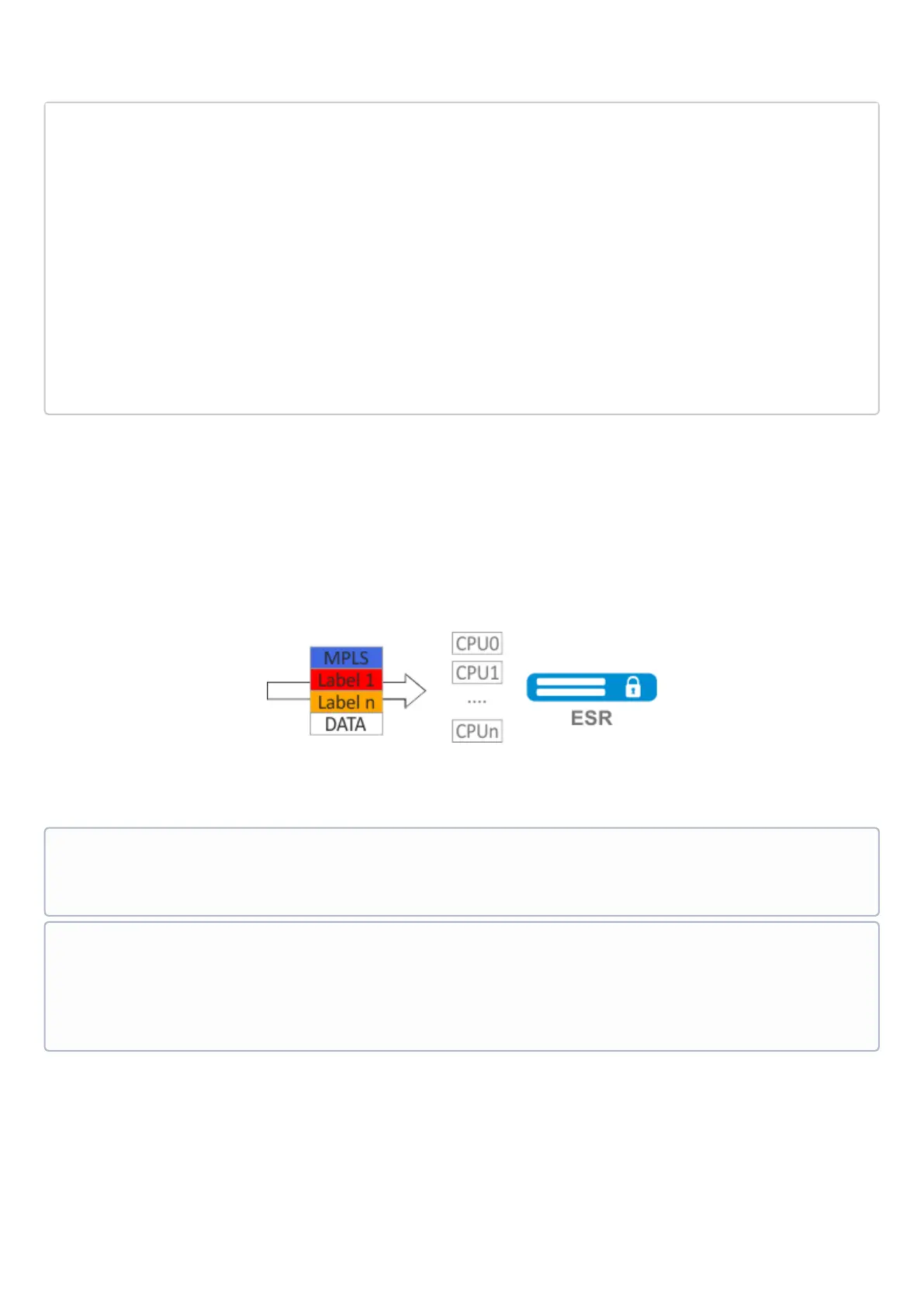You can use one of the following commands to view the VPNv4 table:
ESR1# show ip bgp vpnv4 unicast all
Status codes: * - valid, > - best, i - internal, S - stale
Origin codes: i - IGP, e - EGP, ? - incomplete
Codes Route Distinguisher IP Prefix Next hop Metric Label LocPrf
Weight Path
----- --------------------- ------------------ --------------- ---------- ------- ----------
------ ----------------
*> 65500:100 10.100.0.0/24 -- -- 23 -- --
?
*>i 65500:100 192.168.32.4/30 3.3.3.3 -- 84 100 0
i
*>i 65500:100 10.100.1.0/24 3.3.3.3 -- 84 100 0
i
Outputs all accepted VPNv4 routes after applying filtering.
12.8 MPLS traffic balancing
ESR routers have a multi-core architecture. One of the first links in processing incoming traffic is the load
balancer daemon (lbd), which performs two main functions:
1) Distributes the load evenly among all router CPUs.
2) Detects abnormal situations with high load on some CPUs, and redistributes processing from these CPUs to
less loaded ones.
By default, lbd uses only MPLS tags to calculate the hash and then distribute the load to the different CPUs.
This behavior is not always an advantage, especially when there are "large" homogeneous streams of MPLS
traffic. Additional functionality can be included to add entropy to the hash:
12.8.1 Configuration example
Objective:
Enable L2VPN traffic balancing without using Control Word functionality.
cpu load-balance mpls passenger ip
Enables the possibility to "look beyond" the MPLS header to find the IP header, and add ip-src and ip-
dst to the hash calculation.
cpu load-balance mpls passenger ip-over-ethernet-pseudowire-with-cw
cpu load-balance mpls passenger ip-over-ethernet-pseudowire-without-cw
Allows to explicitly specify whether Control Word functionality is used when building L2VPN. Allows to
prevent an error occurring when a package with Control Word present can be mistakenly recognized as
a package without Control Word.

